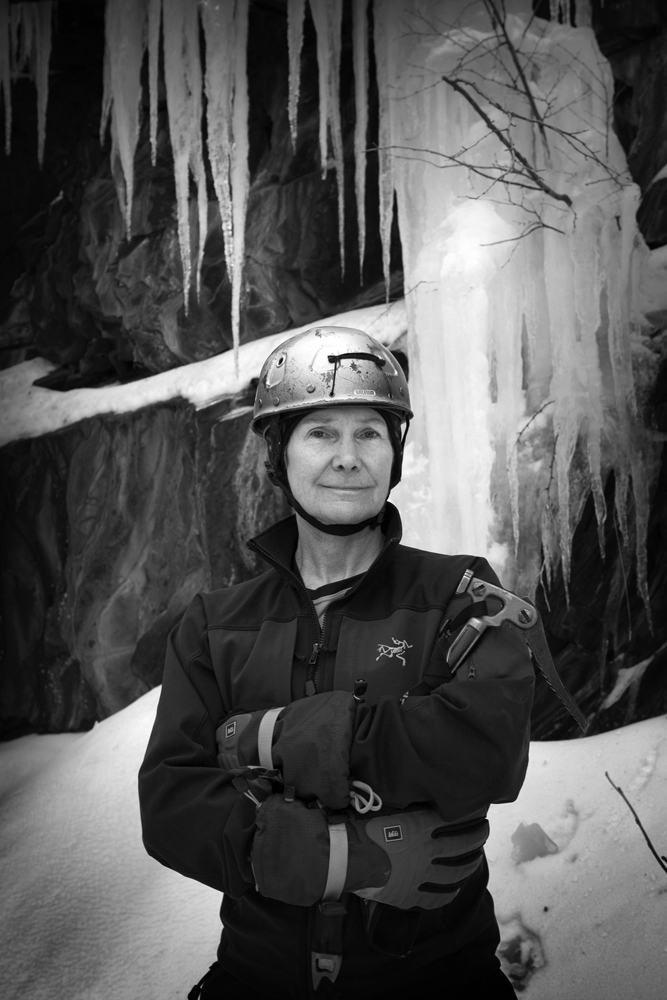To start with, she contracted polio when she was almost 6. She escaped paralysis but it left her weak. Polio also gave Dr. Carol Masheter something else – the determination to be strong plus the dream of doing something extraordinary.
Today, maybe because of some other setbacks, she has reached both those goals and holds two world “titles” that she will discuss April 18 [WEDNESDAY] at East Central University. Masheter is the second oldest woman in the world to reach the summit of Mount Everest and the world’s oldest woman, as of last month, to successfully climb the Seven Summits, the highest points on the world’s seven continents.
She will talk about her challenges, among them her fear of heights, and her successes at 7 p.m. in the Ataloa Theatre in ECU’s Hallie Brown Ford Fine Arts Center. She will be the speaker for the fourth annual Louise Young Diversity Lecture. Admission is free.
Her book “No Magic Helicopter: An Aging Amazon’s Climb of Mount Everest” chronicles her preparation for the climb, her struggle to the summit and what happened on the descent that threatened her life. Copies of the book will be on sale at the lecture for $15.
Masheter was 61 when she summited Mount Everest’s 29,035 feet of elevation on May 24, 2008, and 65 when she climbed the last of the Seven Summits, Mount Kosciuszko in Australia, on March 17, 2012.
The others were Aconcagua in South America (Argentina), Mount Kilimanjaro in Africa (Tanzania), Denali (Mount McKinley) in North America (Alaska), Elbrus in Europe (Russia) and the Vinson Massif in Antarctica in January 2012 just before Mount Kosciuszko.
Masheter was an unlikely climber because of her fear of heights and struggles with anxiety and depression. But her life changed at age 50 when a series of events devastated her. Once a biochemist, she was happy as a popular and successful professor in human development and relationships at the University of Utah. She was a finalist several times for a superior teaching award and her research on relationships between former spouses was being published in the top journals in her field.
Then, within 18 months, she was denied tenure, her long-term relationship with the man she loved ended badly, her mother died, her only sister became seriously ill and her own health began to deteriorate. She quit teaching, worked part-time, took science classes and felt terrible.
One of her colleagues had summited Cho Oyu, the sixth highest peak in the world, near Mount Everest. She thought if he could do something like that, maybe she could, too. Masheter already loved backpacking and had climbed mountains in the United States and Africa.
She signed up for high-altitude climbing instruction and mountaineering in the Andes and thought of it as vacation from anger, sadness, stress. It helped her focus and regain self-confidence. She learned how to break large problems into small, doable steps and found strategies for managing her fear of heights.
Masheter summited 15 peaks in South America over 17,000 feet as well as Cho Oyu. She also began a new career as an epidemiologist for the Utah Department of Health at age 55.
At age 60, she thought, “Why not try Everest?”
After a long process of research, thorough training, preparation and acclimatization, she was accepted for the climb to Mount Everest’s summit. Her two months on the mountain alternated between feelings of self doubt, danger, relief, joy, fear, pain and fatigue.
The Carstensz Pyramid in West Papua in New Guinea, considered by some of the mountaineering community to be the “eighth summit,” still remains on Masheter’s to-do list if suitable arrangements can be made. A local operator previously failed to get her, three other climbers and their expedition leader close enough to climb it.
The Louise Young Diversity Lecture was established in 2008 with a $10,000 endowment from Young, an ECU graduate, to the ECU Foundation Inc. The annual lecture brings a speaker to campus each year to speak on various aspects of diversity.

